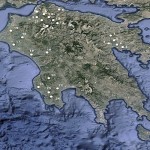The Use and Misuse of the Ahhiyawa Texts
Oliver Dickinson
The aim of this paper is to combat the interpretation of the texts promoted by the editors of The Ahhiyawa Texts (2011), that sees Ahhiyawa, a state whose centre clearly lay in the Aegean, as essentially external to and interfering in western Anatolia to expand its power and influence by subverting Hittite control. It is argued that Ahhiyawa inherited a long history of Anatolian-Aegean connections prior to Hittite dominance of western Anatolia. In a discussion of the related theory that Ahhiyawa was a “great Mycenaean kingdom” that incorporated much if not all of the Aegean world, the arguments for this, especially the archaeological, are disputed. It is suggested that Mycenae was probably the capital of Ahhiyawa and the leading Mycenaean centre, but did not control the other major centres, and that its ability to be active at sea and wide range of links in western Anatolia may have been the factors that made it seem formidable to the Hittites. The texts are argued to be too fragmentary and separated in date to provide an outline of Hittite-Ahhiyawan relations over the period of Mycenaean flourishing in the fourteenth and thirteenth centuries BC; although they shed light on particular episodes, even these cannot be fully understood. They might be interpreted to show that the Hittite-Ahhiyawan relationship was initially quite good, but later came under strain; however, many questions remain unanswered. Their use is to provide clear evidence that there was a state of considerable local importance in the Aegean, that was treated with respect by the Hittite kings. The absence of any real memory of this in historical times only serves to discredit Greek tradition further as a potential source of historical information about the Mycenaean period.

Dickinson O. 2019, The Use and Misuse of the Ahhiyawa Texts, SMEA NS 5, 7-22.


